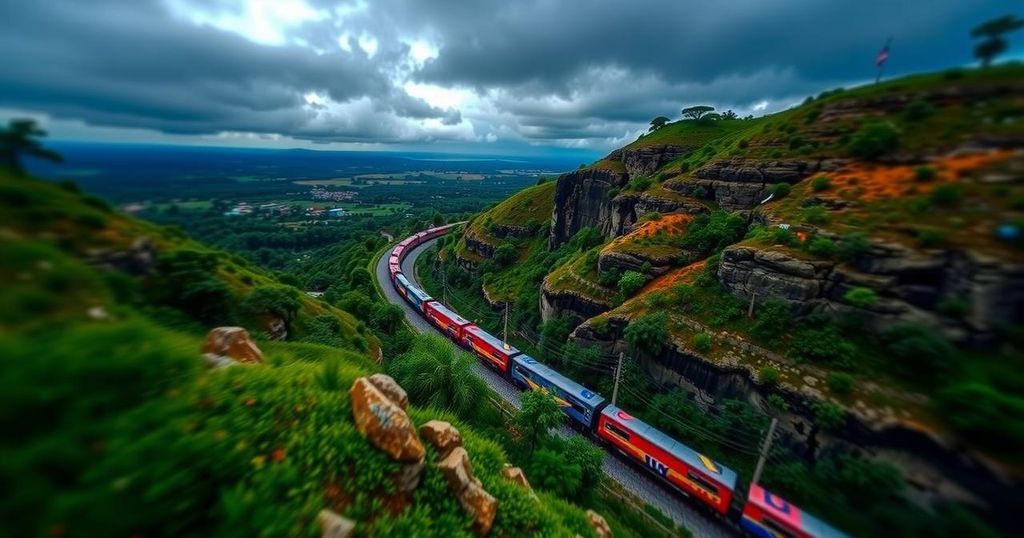Tanzania Secures Financing for Standard Gauge Railway to Burundi

The Tanzanian government has secured financing for the standard gauge railway section linking Tanzania to Burundi, overseen by the Tanzania Railways Corporation. Key international financial institutions are involved, with construction expected to begin soon. Current progress varies across sections, and revenue from freight transportation is anticipated to grow significantly.
The Tanzanian government has successfully secured financing for a vital segment of the Standard Gauge Railway (SGR) linking Tanzania and Burundi. The Tanzania Railways Corporation (TRC) is responsible for the construction of a 2,561-kilometer rail line that will connect Dar es Salaam’s Indian Ocean port to Mwanza, in northwestern Tanzania, and extend to Burundi and other nations, including the Democratic Republic of the Congo, Rwanda, and Uganda. Currently, the operational line from Dar es Salaam to Dodoma, traversing Morogoro, marks the progress of this extensive project, with other phases actively under construction. On Thursday, TRC’s acting director general, Mateshi Tito, announced that negotiations with three international financial institutions have achieved a successful conclusion, allowing financing for the segment from Uvinza in Kigoma, Tanzania, to Musongati in Burundi. This project will receive the necessary funds from Standard Chartered, China Export and Credit Insurance Corporation (Sinosure), and the Africa Development Bank (AfDB). While Tito did not disclose the specific financing amount, he confirmed that contracts to initiate construction would be signed shortly. During discussions on other sections’ progress, Tito reported that the Makutupora-Tabora line was 14.53% complete, while the Tabora-Isaka segment stood at 6.14%. The Isaka-Mwanza section has made more significant progress with 60.62% completion, and the Tabora-Kigoma section is currently at 6.68%. Furthermore, talks are ongoing with companies interested in investing in the SGR project, focusing on locomotive procurement and the construction of the Mtwara-Mbamba Bay line. Chairman of the parliamentary Public Investment Committee (PIC), Augustine Vuma Holle, highlighted that approximately $10 billion has already been invested in the railway construction. “We are optimistic that once the freight train services commence next February, the revenue collected will increase threefold,” Holle remarked. The TRC has gathered over Tsh20 billion ($7.5 million) since passenger operations began. He noted that the railway’s dual-use system typically yields 80% of revenue from freight transportation, indicating a promising financial prospect for the future. Deputy Minister for Transport, David Kihenzile, expressed satisfaction regarding the positive evaluations from the PIC, affirming the government’s commitment to implementing this significant undertaking with diligence. This commitment underscores Tanzania’s ambition to enhance its rail infrastructure and regional connectivity.
The Standard Gauge Railway (SGR) project aims to modernize rail transport across East Africa, primarily linking Tanzania to neighboring countries, facilitating trade, and enhancing regional connectivity. The Tanzanian government’s initiative to secure funding reflects a strategic approach to infrastructure development. The railway’s design allows for efficient movement of both passengers and freight, emphasizing the dual-use capability that is critical for economic growth. This secured funding is a crucial step toward completing the SGR, which is expected to stimulate significant economic benefits upon its full operational status.
In summary, the Tanzanian government has made significant strides in securing financing for the SGR extension to Burundi, with notable financial backing from key international partners. The project’s progress is promising, with several sections nearing completion. The anticipated increase in revenue from freight services signals the importance of this infrastructure project, which aims to elevate Tanzania’s transport sector and boost regional trade. The government remains committed to the ongoing development of this vital infrastructure.
Original Source: www.theeastafrican.co.ke








